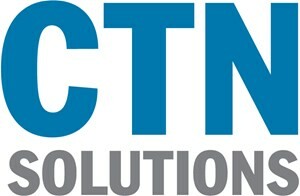 For last week’s tip, we gave helpful advice about how to prepare for a presentation; tips like, how to develop your idea, how to size up your audience, and the importance of rehearsing. For this week’s tip, we’ll go over what it takes to deliver a presentation that’s both effective and memorable.
For last week’s tip, we gave helpful advice about how to prepare for a presentation; tips like, how to develop your idea, how to size up your audience, and the importance of rehearsing. For this week’s tip, we’ll go over what it takes to deliver a presentation that’s both effective and memorable.
Take Advantage of Visual Aids
Using a visual aid for your presentation isn’t an option; it’s mandatory. Consider these statistics:
- People are six times more likely to retain information from a presentation if a visual aid is used.
- For humans, 83 percent of all learning occurs visually.
For businesses, Microsoft PowerPoint has been the standard visual aid tool for years. Although, if you’re looking for an alternative that may better fit your needs, look into other presentation tools like Prezi, Microsoft Sway, and a host of other apps that can be found online (some are even free). Additionally, consider using a physical object as an illustration.
Go Big On the Introduction
You know from your business dealings just how important first impressions are. Presentations are no different. Take it from Cesar Gomez, vice president of Toastmasters, Valencia:
The first seconds of a talk are critical. If the introduction is boring and without imagination, the audience will lose their interest in the rest of the presentation. A creative and interesting beginning captures and maintains the attention of the people.
In addition to capturing the audience’s attention with a dynamic introduction, it will give you a confidence boost that will carry you through the rest of your presentation. Also, be aware that your introduction will set the tone for your entire speech. Therefore, be sure to align your introduction with what you want to accomplish with your speech. If you’re trying to establish credibility, share statistics or a relevant personal story. If you want to entertain, open with a joke.
For your consideration, here are some additional ways to enhance your introduction:
- Start with a quote.
- Tell a story.
- Communicate why your presentation will bring value.
- Surprise your audience with an antidote that’s completely unexpected.
Look ‘em in the Eye
Eye contact during a presentation is one of the biggest aspects of a speech that separates the amateurs from the professionals. Maintaining eye contact throughout the duration of your presentation is essential. It establishes your authority and captures the attention of your audience. Obviously, you don’t want to be overly-creepy about it by staring someone down, but you do want to attempt to refrain from looking at your notes as much as you can. One way to accomplish this is by memorizing your speech.
Bring Something to Give Away
By investing in a giveaway, you’re communicating to your audience that you care about the presentation and them. Additionally, an audience member who walks away with a memento from your speech will go on to remember you every time they come across the object. Therefore, be sure to give away something practical that they can use over and over again.
To take your giveaway to the next level, be sure to tie it in with a product or service that your company offers. Here are some examples:
- A free consultation.
- A free eBook.
- Branded merchandise (like mouse pads, coffee mugs, pens, tote bags, etc.).
- Samples of your product or a trial of your service.
It’s also a best practice to give your audience a copy of your presentation so they can have something to reference. This can be done with handouts of your speech and an audio copy of your presentation.
Always End With a Call to Action
At the end of your speech, you need to be very clear about what your audience is supposed to do next so they can take advantage of what you just talked about. It’s like you’ve just led them on a journey, and now you need to walk them over the finish line so that everybody reaches a conclusion that’s satisfactory.
For your call of action, be as specific as you need to be. Do you need their contact information? Would you like your audience to sign up for a demo? Whatever information you need from your audience, it’s your job to give them clear directions about how they can provide you with it.
Be Sure to Follow Up!
Just because your presentation is over doesn’t mean that your work is done. Your next responsibility is to follow up with your audience. It’s times like this where it pays off to gather contact information during your presentation’s call to action. By de facto, your audience is no longer an audience. They are now qualified leads. Reach out to them by phone, email, and whatever else it takes to turn your new lead into a client.
This is just an introduction on how to give an effective presentation. Being able to give a persuasive and charismatic speech that accomplishes your goals is a valuable skill that can always be improved upon. Therefore, to see maximum results, be sure to continuously develop this skill. As you get better at giving presentations, you will see your influence and the size of your audiences grow, which is great for business!
